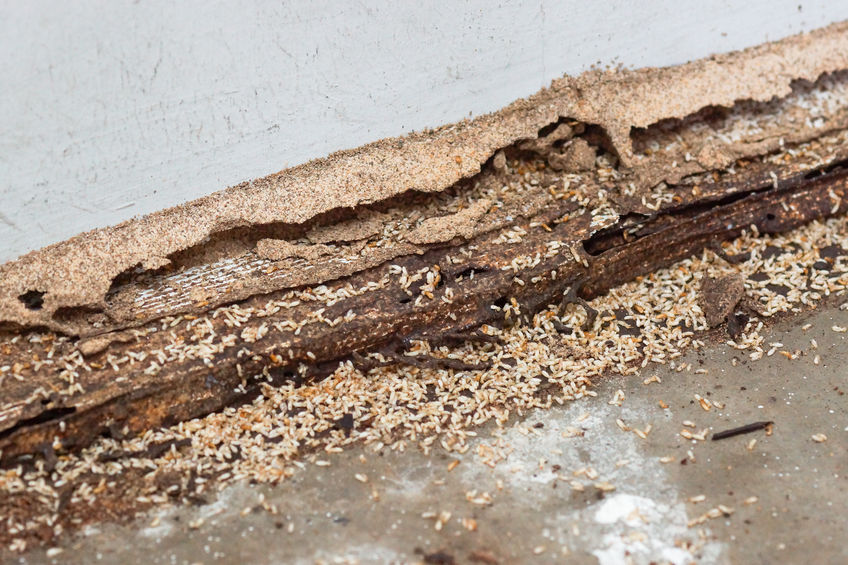How do termites infest a home?
Different termite species have different ways of infesting the home. For example, subterranean termites build underground colonies, and when they infest a piece of wood they do it from the ground up. They also have the capacity to deploy thousands of workers at once and they will infest multiple pieces of wood in a building at the same time. This allows them to collect a lot of cellulose from the wood while remaining undetected.
Drywood and dampwood termites on the other hand will build their colonies inside of the wood that they infest. Not having a central location that can grow independently means that they take a lot longer to get an infestation going, but it also means that they are much harder to detect. Usually, these infestations are cheap and easy to remove. However, when they become extensive, the price tag goes up drastically, because the home has to be tented and fumigated.
Can termite infestations be prevented?
Termite infestations can be prevented in several ways. There are a few methods which are universally effective against termites, such as lowering the humidity levels in the home and making sure that there are no sources of excess moisture in the building (leaky pipes or clogged gutters).
Certain control methods can also be implemented preventively, and there are wood products which come pre-treated with termiticide. For example, chemical barriers and baiting systems are used to control subterranean termite infestations, but they can also be used to prevent an infestation from happening in the first place.
How are termite infestations controlled?
Because of how they build their colonies, different termite species will have to be controlled using different methods. Subterranean termites need to be targeted using chemical barriers and/or baiting stations, while drywood and dampwood termites are treated using localized termiticide applications or tenting and fumigation.
Chemical barriers are the most common control method used against subterranean termites because they stop an infestation almost immediately. Baiting stations can be used either preventively or in tandem with chemical barriers to destroy the termite colony responsible for the infestation.
Localized termiticide applications are used to deal with small drywood and dampwood termite infestations, while tenting and fumigation are used to remove these termites when their populations are very large.
If you have any unanswered questions about these pests, or if you suspect that there is an infestation in your home, contact us today.

